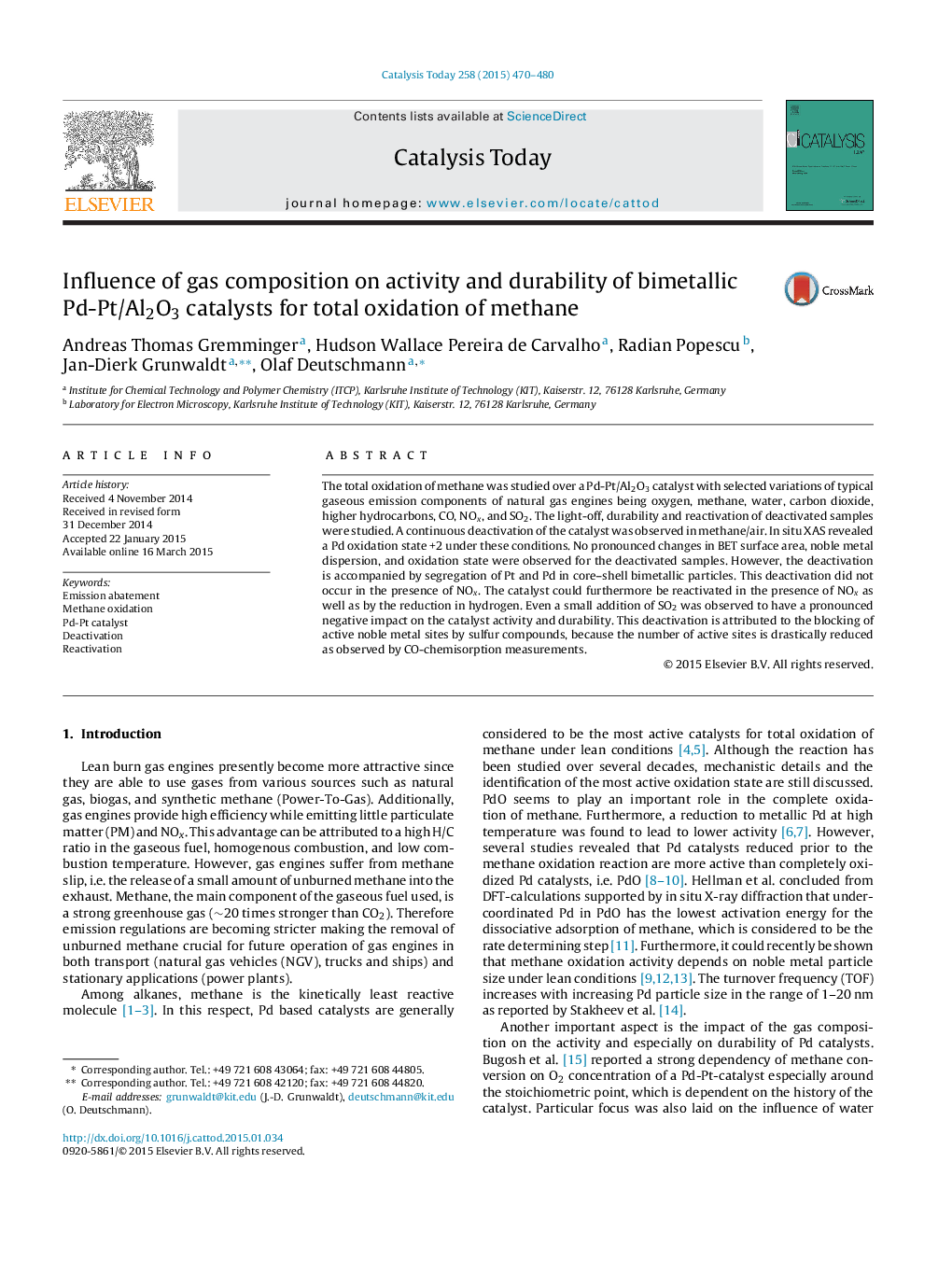| Article ID | Journal | Published Year | Pages | File Type |
|---|---|---|---|---|
| 53622 | Catalysis Today | 2015 | 11 Pages |
•Catalyst long-term activity varies with exhaust composition.•NO/NO2 prevents catalyst from deactivation in absence of SO2 and can also be used for reactivation of the catalyst.•SO2 causes pronounced deactivation and poisoning of catalyst.
The total oxidation of methane was studied over a Pd-Pt/Al2O3 catalyst with selected variations of typical gaseous emission components of natural gas engines being oxygen, methane, water, carbon dioxide, higher hydrocarbons, CO, NOx, and SO2. The light-off, durability and reactivation of deactivated samples were studied. A continuous deactivation of the catalyst was observed in methane/air. In situ XAS revealed a Pd oxidation state +2 under these conditions. No pronounced changes in BET surface area, noble metal dispersion, and oxidation state were observed for the deactivated samples. However, the deactivation is accompanied by segregation of Pt and Pd in core–shell bimetallic particles. This deactivation did not occur in the presence of NOx. The catalyst could furthermore be reactivated in the presence of NOx as well as by the reduction in hydrogen. Even a small addition of SO2 was observed to have a pronounced negative impact on the catalyst activity and durability. This deactivation is attributed to the blocking of active noble metal sites by sulfur compounds, because the number of active sites is drastically reduced as observed by CO-chemisorption measurements.
Graphical abstractFigure optionsDownload full-size imageDownload high-quality image (186 K)Download as PowerPoint slide
